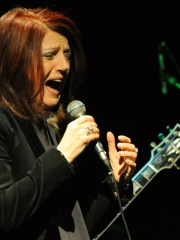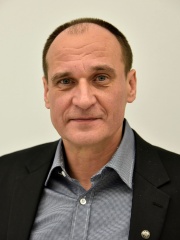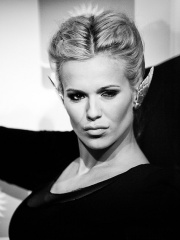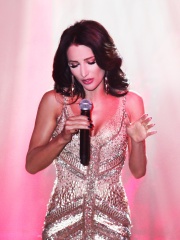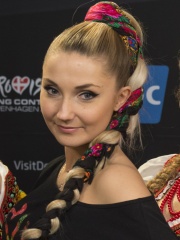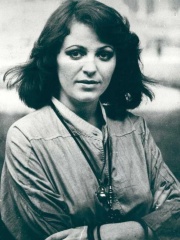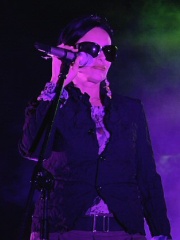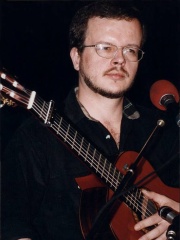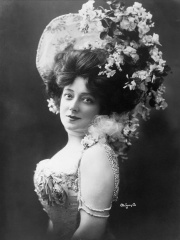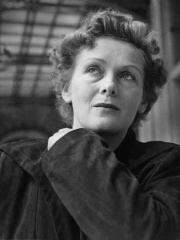
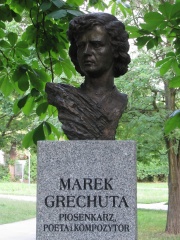


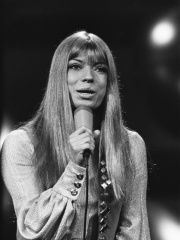
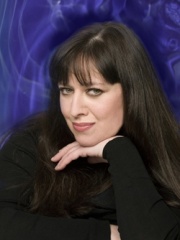
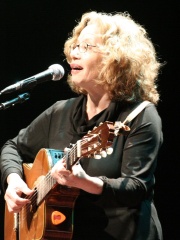

The Most Famous
SINGERS from Poland
Top 10
The following people are considered by Pantheon to be the top 10 most legendary Polish Singers of all time. This list of famous Polish Singers is sorted by HPI (Historical Popularity Index), a metric that aggregates information on a biography’s online popularity. Visit the rankings page to view the entire list of Polish Singers.

1. Elisabeth Schwarzkopf (1915 - 2006)
With an HPI of 63.05, Elisabeth Schwarzkopf is the most famous Polish Singer. Her biography has been translated into 39 different languages on wikipedia.
Dame Olga Maria Elisabeth Friederike Schwarzkopf, (9 December 1915 – 3 August 2006) was a German-born Austro-British lyric soprano. She was among the foremost singers of lieder, and is renowned for her performances of Viennese operetta, as well as the operas of Mozart, Wagner and Richard Strauss. After retiring from the stage, she was a voice teacher internationally. She is considered one of the greatest sopranos of the 20th century.

2. Marek Grechuta (1945 - 2006)
With an HPI of 54.35, Marek Grechuta is the 2nd most famous Polish Singer. His biography has been translated into 63 different languages.
Marek Michał Grechuta (10 December 1945 – 9 October 2006) was a Polish singer, songwriter, composer, and lyricist.

3. Maryla Rodowicz (1945 - )
With an HPI of 53.62, Maryla Rodowicz is the 3rd most famous Polish Singer. Her biography has been translated into 19 different languages.
Maria Antonina Rodowicz, known professionally as Maryla Rodowicz, (Polish pronunciation: [maˈrɨla rɔˈdɔvit͡ʂ] born 8 December 1945 in Zielona Góra), is a Polish singer, guitarist and actress. Throughout over 60 years of her career, she released twenty Polish and four foreign-language studio albums including five with platinum and three with gold certifications and selling over 15 million records. Known for her close collaboration with Agnieszka Osiecka and Seweryn Krajewski, her most popular songs include "Małgośka" (1974), "Futbol" (1974), "Remedium" (1978), "Niech żyje bal" (1984), "Łatwopalni" (1997) and "Wszyscy chcą kochać" (2005). She remains one of the most prominent and successful artists in the history of popular music in Poland. Among the numerous awards and decorations she received are Gold Cross of Merit, Commander's Cross of the Order of Polonia Restituta and Gold Medal for Merit to Culture – Gloria Artis.

4. Miliza Korjus (1905 - 1980)
With an HPI of 50.38, Miliza Korjus is the 4th most famous Polish Singer. Her biography has been translated into 20 different languages.
Miliza Elizabeth Korjus (August 18, 1909(?) – August 26, 1980) was a Polish-Estonian lyric coloratura soprano opera singer who appeared in classical American and Mexican sound films during the Golden Age of Hollywood. Korjus became a naturalized United States citizen in her adulthood. She was nominated for the Academy Award for Best Supporting Actress in 1938 for her performance in The Great Waltz.
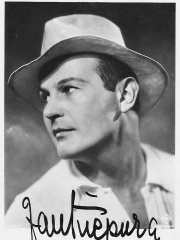
5. Jan Kiepura (1902 - 1966)
With an HPI of 50.33, Jan Kiepura is the 5th most famous Polish Singer. His biography has been translated into 17 different languages.
Jan Wiktor Kiepura (May 16, 1902 – August 15, 1966) was a Polish singer (lyric tenor / lirico spinto, Heldentenor) and actor.

6. Katja Ebstein (1945 - )
With an HPI of 50.11, Katja Ebstein is the 6th most famous Polish Singer. Her biography has been translated into 22 different languages.
Katja Ebstein (born Karin Witkiewicz; 9 March 1945) is a German singer. She was born in Girlachsdorf (now Gniewków, Poland). She achieved success with songs such as "Theater" and "Es war einmal ein Jäger". She was married to Christian Bruhn, who wrote many of her songs. Ebstein represented Germany at the Eurovision Song Contest three times, in 1970, 1971 and 1980. She also took part in Ein Lied für Stockholm in 1975 with the song "Ich liebe dich", placing 5th in the selection. Her best performance was in 1980 when she gained second place with the entry "Theater", her other two songs "Wunder gibt es immer wieder" and "Diese Welt" each came to third places. As noted by John Kennedy O'Connor in his book The Eurovision Song Contest – The Official History, Ebstein is the most successful performer to have taken part in the contest without ever winning. She is the only singer to appear in the top three on three occasions, without winning.

7. Basia (1954 - )
With an HPI of 49.08, Basia is the 7th most famous Polish Singer. Her biography has been translated into 18 different languages.
Barbara Stanisława Trzetrzelewska (Polish: [ˈbaɕa tʂɛtʂɛˈlɛfska] , born 30 September 1954), better known by the mononym Basia, is a Polish singer-songwriter and recording artist noted for her Latin-inspired jazz-pop music. She began singing professionally in various Polish bands from the late 1960s throughout the 1970s, then relocated to the UK in 1981. She rose to fame as a singer in the British trio Matt Bianco. By 1986, Basia and her bandmate Danny White had left the group to focus on her solo career. She signed on with Epic Records and enjoyed a successful international career between 1987 and 1995, particularly in the US where her first two albums Time and Tide and London Warsaw New York were platinum-certified, million-unit sellers. During that period, her biggest hits were "Time and Tide", "New Day for You", "Promises", "Baby You're Mine", "Cruising for Bruising", and "Drunk on Love". She had also built up a fan base in Asia. She took a lengthy hiatus due to personal tragedies, then made a comeback to regular recording and performing in the late 2000s. She currently releases her music through independent labels.

8. Chava Alberstein (1946 - )
With an HPI of 47.97, Chava Alberstein is the 8th most famous Polish Singer. Her biography has been translated into 21 different languages.
Chava Alberstein (Hebrew: חוה אלברשטיין [ˈχava ˈalbeʁʃtein], born 8 December 1946 in Poland) is an Israeli musician, lyricist, composer, and musical arranger. She moved to Israel in 1950 and started her music career in 1964. Alberstein has released over sixty albums in Hebrew, English, and Yiddish. She is known for her liberal activism and advocacy for human rights and Arab-Israeli unity, which has sometimes stirred controversy, such as the ban of her song "Had Gadya" by Israel State Radio in 1989. Alberstein has received numerous accolades, including the Kinor David Prize, the Itzik Manger Prize, and honorary doctorates from several universities.

9. Anna Maria Jopek (1970 - )
With an HPI of 46.75, Anna Maria Jopek is the 9th most famous Polish Singer. Her biography has been translated into 78 different languages.
Anna Maria Jopek (born 14 December 1970) is a Polish vocalist, songwriter, and improviser. She represented Poland in the 1997 Eurovision Song Contest, with the song "Ale jestem" and finished 11th out of 25 participating acts; and in 2002, she collaborated on an album with jazz guitarist Pat Metheny. She has received numerous awards for her music, including Michel Legrand's Personal Award in Vitebsk in 1994, as well as all of the awards for music in Poland, together with gold and platinum records.
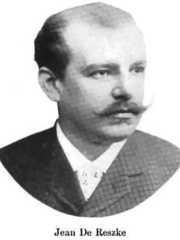
10. Jean de Reszke (1850 - 1925)
With an HPI of 46.65, Jean de Reszke is the 10th most famous Polish Singer. His biography has been translated into 15 different languages.
Jean de Reszke (Jan Reszke) (14 January 1850 – 3 April 1925) was a Polish dramatic tenor and opera star. Reszke came from a wealthy Polish family with classical and operatic musical traditions. His mother gave him his first singing lessons and provided a home that was a recognized music centre. His sister Josephine and younger brother Édouard performed in Western Europe, and Reszke would perform with each of them throughout his career. He began as a baritone, but after having been trained by Giovanni Sbriglia he found that he was better suited and was most proficient as a tenor. His performance of Meyerbeer's Robert le diable in Madrid in 1879, made him a notable singer. Reszke ranked as the foremost dramatic tenor from that point until his retirement from the stage. He performed at opera venues in Paris, London, and New York, including command performances for Queen Victoria. He was known for his desire to perform operas in the language in which they were written. Rather than taking the time-honored interpretation of the music and the characters, he brought a fresh and fuller perspective that impressed the audience, impresarios, and conductors. Music critic Camille Bellaigue said that he "gave to every word the fullness of its meaning and to every note the perfection of sound." After suffering from illnesses that affected his performances, he retired from the stage just after the turn of the 20th century. He was then a renowned vocal teacher and a horse breeder.
Pantheon has 37 people classified as singers born between 1850 and 2005. Of these 37, 28 (75.68%) of them are still alive today. The most famous living singers include Maryla Rodowicz, Katja Ebstein, and Basia. The most famous deceased singers include Elisabeth Schwarzkopf, Marek Grechuta, and Miliza Korjus. As of April 2022, 6 new singers have been added to Pantheon including Anna Jantar, Anna Held, and Agnieszka Chylińska.
Living Singers
Go to all Rankings
Maryla Rodowicz
1945 - Present
HPI: 53.62
Katja Ebstein
1945 - Present
HPI: 50.11
Basia
1954 - Present
HPI: 49.08
Chava Alberstein
1946 - Present
HPI: 47.97
Anna Maria Jopek
1970 - Present
HPI: 46.75
Urszula Dudziak
1943 - Present
HPI: 45.58
Edyta Górniak
1972 - Present
HPI: 43.18
Paweł Kukiz
1963 - Present
HPI: 41.25
Doda
1984 - Present
HPI: 40.64
Justyna Steczkowska
1972 - Present
HPI: 38.45
Kayah
1967 - Present
HPI: 37.32
Cleo
1983 - Present
HPI: 35.30

Deceased Singers
Go to all Rankings
Elisabeth Schwarzkopf
1915 - 2006
HPI: 63.05
Marek Grechuta
1945 - 2006
HPI: 54.35
Miliza Korjus
1905 - 1980
HPI: 50.38
Jan Kiepura
1902 - 1966
HPI: 50.33
Jean de Reszke
1850 - 1925
HPI: 46.65
Anna Jantar
1950 - 1980
HPI: 45.79
Olga Jackowska
1951 - 2018
HPI: 43.90
Jacek Kaczmarski
1957 - 2004
HPI: 42.23
Anna Held
1872 - 1918
HPI: 42.20

Newly Added Singers (2022)
Go to all Rankings
Anna Jantar
1950 - 1980
HPI: 45.79
Anna Held
1872 - 1918
HPI: 42.20
Agnieszka Chylińska
1976 - Present
HPI: 33.68
Rafał Brzozowski
1981 - Present
HPI: 32.48
Ania
1981 - Present
HPI: 27.51
Ewelina Lisowska
1991 - Present
HPI: 22.80

Which Singers were alive at the same time? This visualization shows the lifespans of the 9 most globally memorable Singers since 1700.

